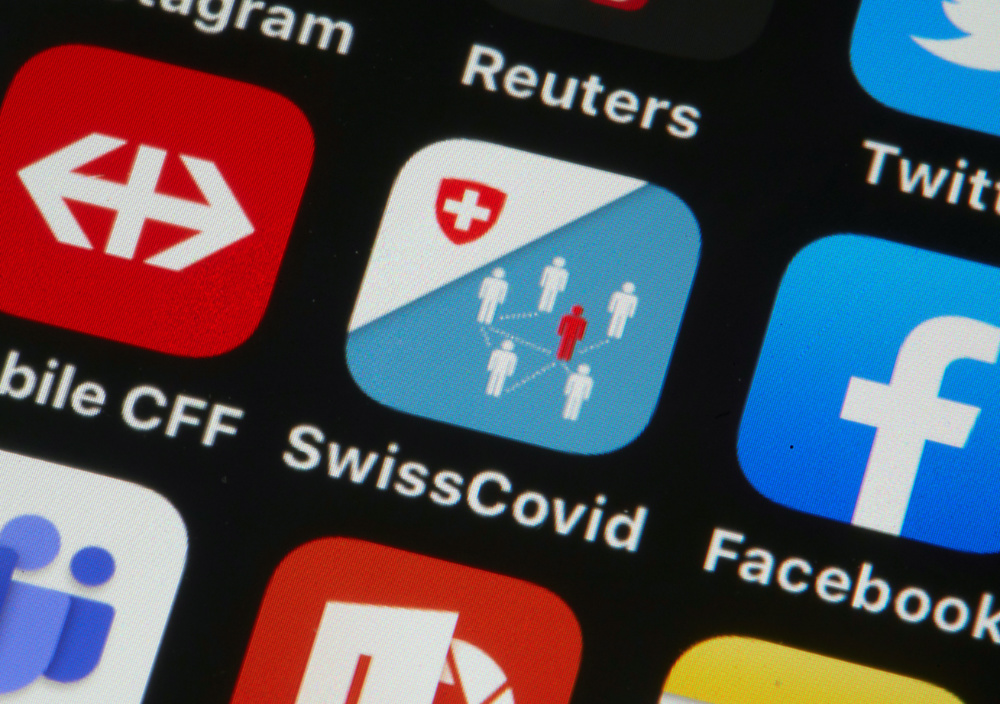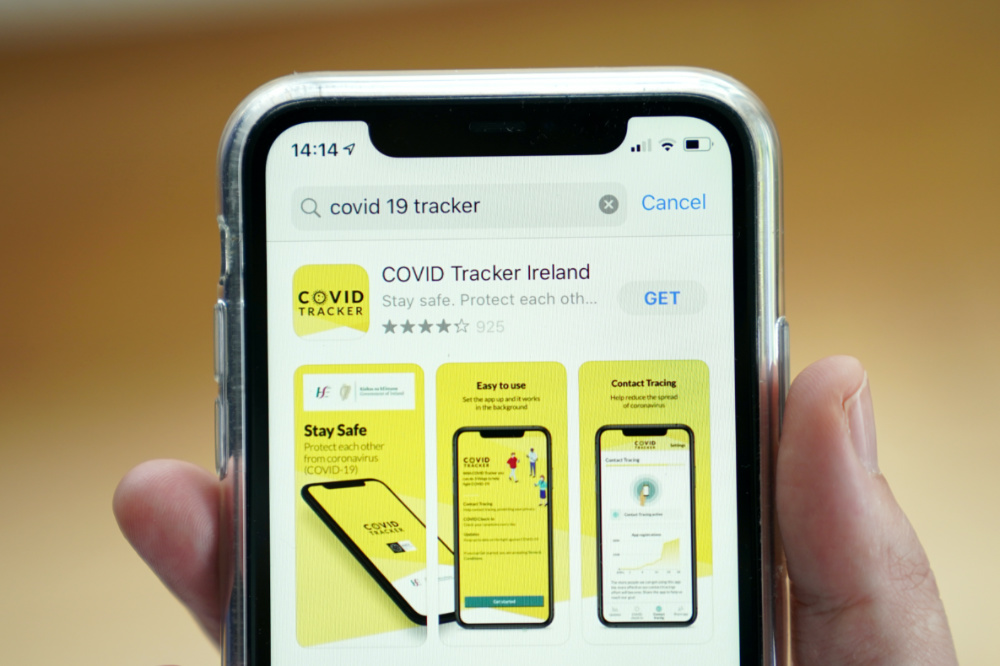Dublin, Ireland/Berlin, Germany
Reuters
Europe’s experiment in using technology to fight coronavirus has achieved some early successes: millions of people have downloaded smartphone tracker apps and hundreds have uploaded the results of positive COVID-19 tests.
Yet most European countries so far lack solid evidence that their apps – which identify close contacts via Bluetooth connections with nearby users – are actually alerting people who may have caught the disease before they can infect others.
The reason? Design choices made by governments and their app developers to protect people’s privacy.

The Swisscovid contact tracing application of Switzerland, using Bluetooth and a design called Decentralised Privacy-Preserving Proximity Tracing (DP-3T) to ease the lockdown caused by the coronavirus disease (COVID-19) outbreak is seen in this illustration taken on 24th June. PICTURE: Reuters/Denis Balibouse/Illustration/File photo
In many of the 11 European territories using architecture designed by Alphabet’s Google and Apple, apps have been made to be ‘blind’ to warnings of potential exposure to COVID-19 flowing through the system.
In Switzerland, for example, the Federal Office of Public Health acknowledged that “the effectiveness of the SwissCovid App is difficult to measure because of the ‘privacy by design'”.
The weakness puzzles some who have championed the apps. They point out that the Apple-Google framework does allow for some data collection while at the same time making it impossible for governments to stalk their own citizens.
“I find it quite strange that many of the systems are designed not to be able to monitor and evaluate,” said Michael Veale, a lecturer at University College London.
Ireland, which uses the same standard, is showing the benefits of being a bit less privacy-obsessed. Its Covid Tracker app, which has been downloaded by 30% of the population, tallies how many people upload a positive test result and how many get notifications.
“We’re seeing the whole end-to-end flow and success from that perspective,” said Colme Harte, technical director at NearForm, the software development firm that created the Irish app.
A total of 58 users registered positive tests in the app’s first three weeks of operation through to 28th July, generating 137 close contact alerts. Of these, 129 opted to get a follow-up call from Ireland’s contact tracing team.
Building trust
While the numbers are small, partly reflecting Ireland’s low levels of infection with the flu-like illness, publishing them helps to show that people can make a contribution to fighting the pandemic by downloading the app.
“It helps build trust that it is worth actually installing the app,” Harte told Reuters. The Irish app has inspired spinoffs in Northern Ireland and Gibraltar, while Scotland has picked NearForm to develop its own app.

The COVID Tracker Ireland app used for contact tracing the spread of coronavirus disease (COVID-19) is displayed on a mobile phone, as it is held up for an illustration photograph in Galway, Ireland, on 30th July. PICTURE: Reuters/Clodagh Kilcoyne/Illustration/File photo
Elsewhere in Europe the data is much sketchier.
“It is impossible to say how many people have received risk notifications,” the Robert Koch Institute, Germany’s federal agency for disease control, said in answer to a Reuters inquiry. This is because checking for alerts is handled on individual devices, an approach called decentralisation.
Germany’s Corona Warn App has been downloaded more than 16 million times, though uptake has slowed since it emerged that some smartphones were sending the app to sleep to save battery. The problem was soon fixed but prompted critical media coverage.
So far 1,052 people who have tested positive have been issued with one-time codes to upload into the system, according to weekly figures from the Robert Koch Institute. But there is no way of knowing if they actually did so.
Switzerland is publishing daily updates on downloads, active users and uploads of positive test results – now running at a rate of just over 10 a day. But, again, no monitoring of risk notifications is possible in its version of the Google-Apple setup. The two companies declined to comment for this article.
In Asia, China and South Korea have chosen more intrusive location-based contact tracing, while Singapore tried a Bluetooth app that, because it used a central server, did not work properly due to the privacy settings on Apple iPhones.
Other European countries, meanwhile, are turning to surveys as a workaround.
In Denmark, the Statens Serum Institute for infectious diseases last week published a survey which found that 48 people had booked a COVID-19 test online after getting risk warnings from the Smittestop app.
“The app should work as a digital supplement to our efforts in infection tracking,” Health Minister Magnus Heunicke said. “It’s good news that we now also have figures showing that the app works and helps to find unknown contacts.”






